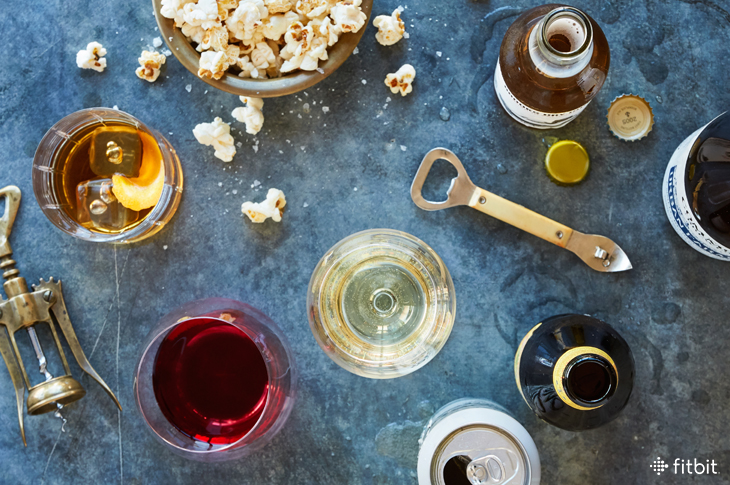 Alcohol consumption has been in the news a lot over the past few months. In August, model Chrissy Teigen admitted that she’d been “point blank, just drinking too much.” That same month, a study published in JAMA Psychiatry showed that alcohol use disorder was on the rise.
Alcohol consumption has been in the news a lot over the past few months. In August, model Chrissy Teigen admitted that she’d been “point blank, just drinking too much.” That same month, a study published in JAMA Psychiatry showed that alcohol use disorder was on the rise.
According to the study of 40,000 Americans, alcoholism saw a 49.4 percent increase during the first decade of the new millennium, while general alcohol use jumped by 11.2 percent and high-risk drinking behaviors by 29.9 percent. Roughly 12.7 percent (or 1 in 8) U.S. adults now suffers from alcoholism.
Binge drinking and alcoholism aren’t typically discussed in the more concerning way drugs are, but they are increasingly prevalent issues—and can be just as costly. Brad Uren, MD, an assistant professor of emergency medicine at the University of Michigan, says heavy drinking can lead to issues like heart disease, blood pressure problems, liver disease, bleeding in the stomach, and more.
Like Teigen confessed, it’s easy to start drinking more (and more), and not really notice it’s becoming a habitual problem over time. Much like healthy eating, you have to make a concerted effort to keep drinking in check. Here are Uren’s tips for responsible drinking.
Know What One Drink Looks Like
Are you likely aware that some drinks are stronger than others? Yes. Do you think about alcohol content all the time? Probably not. You are probably more prone to count glasses or cups of alcohol. “But if someone hands you a glass of party punch, for instance, there could be six drinks in there, depending on how it’s mixed and the volume of alcohol,” explains Uren.
You want to avoid “binging” on alcohol, which is when blood alcohol level rises above 0.08, says Uren—that’s typically around four drinks over the course of two hours for women, and five drinks for men. Going too far is especially common among younger or novice drinkers, he explains. Not knowing what’s in your drink can lead to an “unintentional binge” episode of sorts—so make sure you’re aware of content, not just cups.
Understand (All) the Risks and Stay Aware
There are long-term risks associated with heavy drinking, but there are also acute or short-term risks of a binge, in addition to loss of inhibitions and self-control, according to Uren. “In 2010, binge drinking lost this country about $191 billion in work productivity, health care, and legal bills,” he explains.
In the ER, Uren says he often sees an uptick in driving crash injuries, assaults, or falling down from intoxication during times of the year where there’s more heavy drinking, like the holiday season. It’s important to keep your drinking in check, so you can remain productive and healthy—in the short-term, not just the long-term—and be aware of the risk of drinking-related incidents where alcohol is being served.
Plan Your Drinks in Advance and Be Mindful
You plan your indulgences and your meals if you want to make sure your diet is consistently healthy, right? It’s no different with drinking, says Uren. “A lot of the tools that may be helpful involve simple planning, and a lot of it is environment,” he explains. If you want to stick to a quota, like three or four drinks, bow out of a party when you hit your limit. Or, Uren says you can stick to one alcoholic beverage, and then a bottle of water, to keep your intake (and blood alcohol level) lower.
Mindfulness is perhaps the most important tactic to use while drinking; sense when you’ve had enough, and you’re done, just as you would if you were eating a big slice of cake. In fact, recent research shows practicing short, guided mindfulness strategies can drastically reduce alcohol intake among at-risk drinkers.
Recruit Friends With the Same Goals
There’s power in numbers when it comes to drinking. If you want to consume no more than four or five drinks (or less) find a friend or two who will agree to do the same—whether you’re going to the same party, or just hitting the town for a night as a group. “Seek out those people with the same goals and ideals,” says Uren. “You really have to plan ahead to do this, but it helps.”
There’s temptation to drink more when others around you are passing out drinks; a socially-motivated, albeit unintended form of peer pressure. If you have friends who support your goals, though, you can all withstand the urge to order another round together.
This information is for educational purposes only and is not intended as a substitute for medical diagnosis or treatment. You should not use this information to diagnose or treat a health problem or condition. Always check with your doctor before changing your diet, altering your sleep habits, taking supplements, or starting a new fitness routine.

I really appreciate your tip to try and drink as much water as you are drinking alcohol. That way, your blood alcohol levels stay low. My wife and I are planning a housewarming party, and we want to serve alcohol. I will be sure to provide water as well as alcohol!